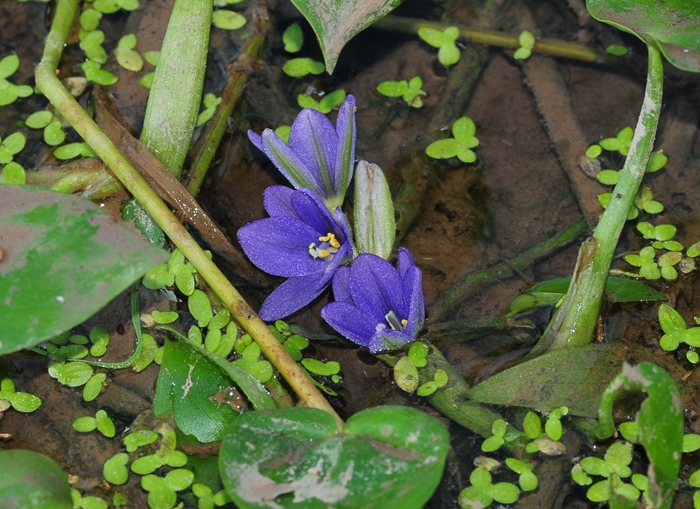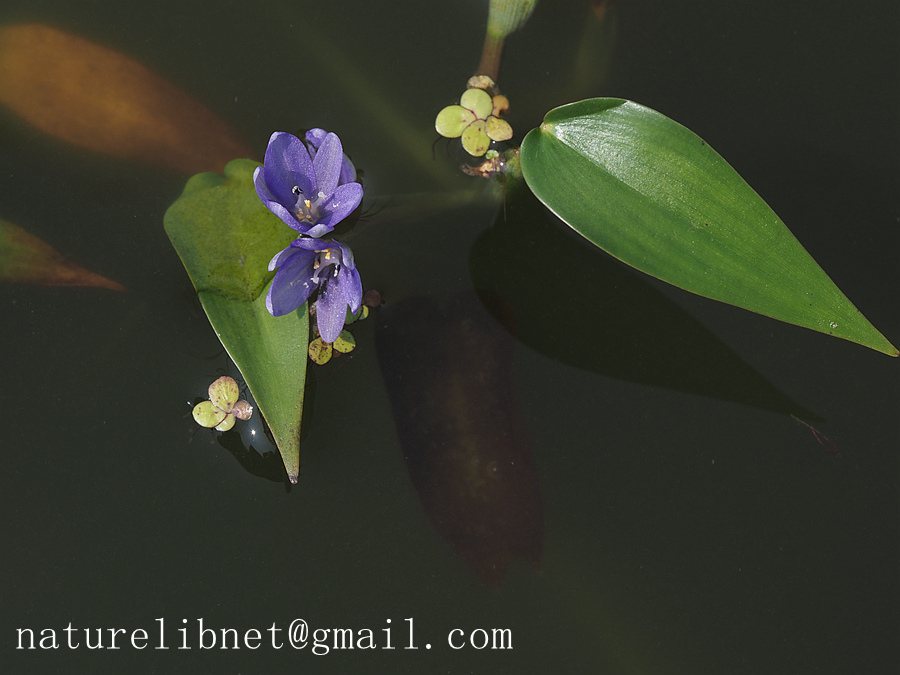- Scientific Name: Monochoria vaginalis (Burm.f.) C.Presl
- Ref: Reliq. Haenk. 1:128. 1827
- Synonyms:
- Boottia mairei H.Lév.
- Gomphima vaginalis (Burm.f.) Raf.
- Monochoria junghuhniana Hassk.
- M. linearis (Hassk.) Miq.
- M. loureiroi Kunth
- M. ovata Kunth
- M. pauciflora (Blume) Kunth
- M. plantaginea (Roxb.) Kunth
- M. vaginalis var. angustifolia G.X.Wang
- M. vaginalis var. pauciflora (Blume) Merr.
- M. vaginalis var. plantaginea (Roxb.) Solms
- Pontederia cordata Lour.
- P. lanceolata Wall. ex Kunth
- P. linearis Hassk.
- P. loureiroana Schult. & Schult.f.
- P. pauciflora Blume
- P. plantaginea Roxb.
- P. vaginalis Burm.f.
- P. vaginata Royle
- English Common Name: heartshape false pickerelweed, oval-leafed pondweed
- Chinese Common Name: 鸭舌草 yāshé∙cǎo
- Japanese Common Name: コナギ [小菜葱/子菜葱] konagi
- Family: Pontederiaceae
- Genus: Monochoria
- Distribution: Rice fields, ditches, ponds, swamps; near sea level to 1500 m. Throughout China [Bhutan, Cambodia, India, Indonesia, Japan, Korea, Laos, Malaysia, Myanmar, Nepal, Pakistan, Philippines, Russia (Siberia), Sri Lanka, Thailand, Vietnam; Africa, Australia].
- Photo:09/08/2019,HZBG, Zhejiang
- Note: The Chinese common name of the species and its order are both related to duck: duck’s tongue and duck’s palmate respectively.
Herbs aquatic. Stems erect or obliquely so. Radical leaves with broad sheath; petiole 3--50 cm; leaf blade narrowly cordate, broadly or narrowly ovate, or lanceolate, 2--21 × 0.8--10 cm, apex acute to acuminate. Flowering stems 12--35 cm. Inflorescences soon reflexed after anthesis, 3--8(--12)-flowered; peduncle 1--3 cm, base bracteate; bract lanceolate. Flowers pedicellate. Perianth segments purplish, ovate-lanceolate to oblong, 0.8--1.5 cm. Larger stamen: filament appendaged; anther 1.8--4 mm. Smaller stamens: filaments filiform; anthers 1.5--3 mm. Capsule ovoid to ellipsoid, 0.7--1 cm. Seeds ellipsoid, ca. 1 mm; wings 8--12. Fl. Aug--Sep, fr. Sep--Oct. (Flora of China)


